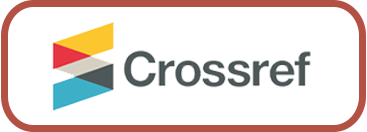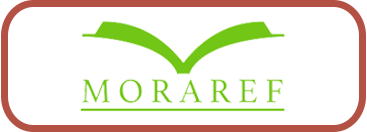Online Submissions
Already have a Username/Password for Journal of Contemporary Islam and Muslim Societies?
Go to Login
Need a Username/Password?
Go to Registration
Registration and login are required to submit items online and to check the status of current submissions.
Author Guidelines
Articles submitted for publication must conform to the following guidelines:
1. General guidelines:
Article consists of title, name of author, affiliation, abstract (Indonesian and English), keywords, introduction, method, results and discussion, conclusion and recommendation, and references.
Articles could be based on either conceptual or empirical research findings. Articles must discuss issues that are of fundamental and international/global concern and importance. Issues may speak to and address local contexts, but they must be of significance to the greater regional, global, and collective interests.
Manuscript must be written in standard academic English.
Article should be original and free from plagiarism and should be previously checked by Turnitin software and Editors reserve the right to re-check for the similarities.
Articles should be approximately 6000 words long; however, both shorter and longer manuscripts will be considered; Articles must be typed in 1,5 lines on A4 paper size; Abstract of 130-150 words should accompany every submission.
Unless otherwise indicated earlier, abbreviations should be avoided. Title of article should be written out in full.
All article manuscripts will be peer-reviewed by qualified academics in the field; this process may take weeks or months.
Manuscripts must be edited for style prior to publication. Author should adopt in-house style of JCIMS (download TEMPLATE).
Authors should be willing to respond to questions from readers of their articles. The Editorial Board of JCIMS appreciates your patience and forbearance while your manuscripts are being processed and under review.
The reference (endnotes and references) follows this format. References must be derived from books and accredited national journal articles, especially reputable international journals.
A reference list of all material mentioned in the article, including books, book chapters, journal articles, court decisions, and laws, should be enlisted at the end of the article.
All submissions should be in OpenOffice, Microsoft Word, or RTF document file format.
The submission should include full name(s) of the author(s), along with his/her/their institution and complete address;
Arabic words should be transliterated according to the style of this journal. Arabic romanization should be written:’, b, t, th, j, ḥ, kh, d, dh, r, z, s, sh, ṣ, ḍ, ṭ, ẓ, ‘, gh, f, q, l, m, n, h, w, y. Short vowels: a, i, u. long vowels: ā, ī, ū. Diphthongs: aw, ay. Tā marbūṭā: t. Article: al-. For detail information on Arabic Romanization, please refer the transliteration system of the Library of Congress (LC) Guidelines click here.
All notes must appear in the text as citations. In a matter of bibliographical style, JCIMS follows Chicago Manual of Style 17th Edition (full note).
2. Writing Style
Title of articles should be specific and efficient (the maximum length of a title is 14 words)
Two types of abstract, one in Indonesian and the other in English, each of which 130-150 words, are typed in single space.
Keywords should include 3 (three) until 5 (five) terms that reflect the basic concept contained by the papers.
The articles should be typed with a 12-point Garamond-Normal font, except for Arabic texts should use 16-point Traditional Arabic.
When a source is cited for the first time, full information must be provided: full name(s) of author(s), title of the source in italic, place of publication, publishing company, date of publication, and the precise page that is cited.
Examples of endnote style [Chicago Manual of Style 17th Edition (full note)]:
Book
Notes
Zadie Smith, Swing Time (New York: Penguin Press, 2016), 315–16.
Brian Grazer and Charles Fishman, A Curious Mind: The Secret to a Bigger Life (New York: Simon & Schuster, 2015), 12.
Shortened notes
- Smith, Swing Time, 320.
- Grazer and Fishman, Curious Mind, 37.
Bibliography entries (in alphabetical order)
Grazer, Brian, and Charles Fishman. A Curious Mind: The Secret to a Bigger Life. New York: Simon & Schuster, 2015.
Smith, Zadie. Swing Time. New York: Penguin Press, 2016.
Chapter or other parts of an edited book
In a note, cite specific pages. In the bibliography, include the page range for the chapter or part.
Note
Henry David Thoreau, “Walking,” in The Making of the American Essay, ed. John D’Agata (Minneapolis: Graywolf Press, 2016), 177–78.
Shortened note
- Thoreau, “Walking,” 182.
Bibliography entry
Thoreau, Henry David. “Walking.” In The Making of the American Essay, edited by John D’Agata, 167–95. Minneapolis: Graywolf Press, 2016.
Note
John D’Agata, ed., The Making of the American Essay (Minneapolis: Graywolf Press, 2016), 177–78.
Shortened note
- D’Agata, American Essay, 182.
Bibliography entry
D’Agata, John, ed. The Making of the American Essay. Minneapolis: Graywolf Press, 2016.
Translated book
Note
Jhumpa Lahiri, In Other Words, trans. Ann Goldstein (New York: Alfred A. Knopf, 2016), 146.
Shortened note
- Lahiri, In Other Words, 184.
Bibliography entry
Lahiri, Jhumpa. In Other Words. Translated by Ann Goldstein. New York: Alfred A. Knopf, 2016.
E-book
For books consulted online, include a URL or the name of the database. For other types of e-books, name the format. If no fixed page numbers are available, cite a section title or a chapter or other number in the notes, if any (or simply omit).
Notes
Herman Melville, Moby-Dick; or, The Whale (New York: Harper & Brothers, 1851), 627, http://mel.hofstra.edu/moby-dick-the-whale-proofs.html.
Philip B. Kurland and Ralph Lerner, eds., The Founders’ Constitution (Chicago: University of Chicago Press, 1987), chap. 10, doc. 19, http://press-pubs.uchicago.edu/founders/.
Brooke Borel, The Chicago Guide to Fact-Checking (Chicago: University of Chicago Press, 2016), 92, ProQuest Ebrary.
Jane Austen, Pride and Prejudice (New York: Penguin Classics, 2007), chap. 3, Kindle.
Shortened notes
- Melville, Moby-Dick, 722–23.
- Kurland and Lerner, Founders’ Constitution, chap. 4, doc. 29.
- Borel, Fact-Checking, 104–5.
- Austen, Pride and Prejudice, chap. 14.
Bibliography entries (in alphabetical order)
Austen, Jane. Pride and Prejudice. New York: Penguin Classics, 2007. Kindle.
Borel, Brooke. The Chicago Guide to Fact-Checking. Chicago: University of Chicago Press, 2016. ProQuest Ebrary.
Kurland, Philip B., and Ralph Lerner, eds. The Founders’ Constitution. Chicago: University of Chicago Press, 1987. http://press-pubs.uchicago.edu/founders/.
Melville, Herman. Moby-Dick; or, The Whale. New York: Harper & Brothers, 1851. http://mel.hofstra.edu/moby-dick-the-whale-proofs.html.
Journal article
In a note, cite specific page numbers. In the bibliography, include the page range for the whole article. For articles consulted online, include a URL or the name of the database. Many journal articles list a DOI (Digital Object Identifier). A DOI forms a permanent URL that begins https://doi.org/. This URL is preferable to the URL that appears in your browser’s address bar.
Notes
Susan Satterfield, “Livy and the Pax Deum,” Classical Philology111, no. 2 (April 2016): 170.
Shao-Hsun Keng, Chun-Hung Lin, and Peter F. Orazem, “Expanding College Access in Taiwan, 1978–2014: Effects on Graduate Quality and Income Inequality,” Journal of Human Capital11, no. 1 (Spring 2017): 9–10, https://doi.org/10.1086/690235.
Peter LaSalle, “Conundrum: A Story about Reading,” New England Review38, no. 1 (2017): 95, Project MUSE.
Shortened notes
- Satterfield, “Livy,” 172–73.
- Keng, Lin, and Orazem, “Expanding College Access,” 23.
- LaSalle, “Conundrum,” 101.
Bibliography entries (in alphabetical order)
Keng, Shao-Hsun, Chun-Hung Lin, and Peter F. Orazem. “Expanding College Access in Taiwan, 1978–2014: Effects on Graduate Quality and Income Inequality.” Journal of Human Capital 11, no. 1 (Spring 2017): 1–34. https://doi.org/10.1086/690235.
LaSalle, Peter. “Conundrum: A Story about Reading.” New England Review 38, no. 1 (2017): 95–109. Project MUSE.
Satterfield, Susan. “Livy and the Pax Deum.” Classical Philology 111, no. 2 (April 2016): 165–76.
Note
Rachel A. Bay et al., “Predicting Responses to Contemporary Environmental Change Using Evolutionary Response Architectures,” American Naturalist189, no. 5 (May 2017): 465, https://doi.org/10.1086/691233.
Shortened note
- Bay et al., “Predicting Responses,” 466.
Bibliography entry
Bay, Rachael A., Noah Rose, Rowan Barrett, Louis Bernatchez, Cameron K. Ghalambor, Jesse R. Lasky, Rachel B. Brem, Stephen R. Palumbi, and Peter Ralph. “Predicting Responses to Contemporary Environmental Change Using Evolutionary Response Architectures.” American Naturalist 189, no. 5 (May 2017): 463–73. https://doi.org/10.1086/691233.
News or magazine article
Articles from newspapers or news sites, magazines, blogs, and the like are cited similarly. Page numbers, if any, can be cited in a note but are omitted from a bibliography entry. If you consulted the article online, include a URL or the name of the database.
Notes
Rebecca Mead, “The Prophet of Dystopia,” New Yorker, April 17, 2017, 43.
Farhad Manjoo, “Snap Makes a Bet on the Cultural Supremacy of the Camera,” New York Times, March 8, 2017, https://www.nytimes.com/2017/03/08/technology/snap-makes-a-bet-on-the-cultural-supremacy-of-the-camera.html.
Rob Pegoraro, “Apple’s iPhone Is Sleek, Smart and Simple,” Washington Post, July 5, 2007, LexisNexis Academic.
Tanya Pai, “The Squishy, Sugary History of Peeps,” Vox, April 11, 2017, http://www.vox.com/culture/2017/4/11/15209084/peeps-easter.
Shortened notes
- Mead, “Dystopia,” 47.
- Manjoo, “Snap.”
- Pegoraro, “Apple’s iPhone.”
- Pai, “History of Peeps.”
Bibliography entries (in alphabetical order)
Manjoo, Farhad. “Snap Makes a Bet on the Cultural Supremacy of the Camera.” New York Times, March 8, 2017. https://www.nytimes.com/2017/03/08/technology/snap-makes-a-bet-on-the-cultural-supremacy-of-the-camera.html.
Mead, Rebecca. “The Prophet of Dystopia.” New Yorker, April 17, 2017.
Pai, Tanya. “The Squishy, Sugary History of Peeps.” Vox, April 11, 2017. http://www.vox.com/culture/2017/4/11/15209084/peeps-easter.
Pegoraro, Rob. “Apple’s iPhone Is Sleek, Smart and Simple.” Washington Post, July 5, 2007. LexisNexis Academic.
Readers’ comments are cited in the text or in a note but omitted from a bibliography.
Note
- Eduardo B (Los Angeles), March 9, 2017, comment on Manjoo, “Snap.”
For more examples, see 14.188–90 (magazines), 14.191–200 (newspapers), and 14.208 (blogs) in The Chicago Manual of Style.
Book review
Note
Michiko Kakutani, “Friendship Takes a Path That Diverges,” review of Swing Time, by Zadie Smith, New York Times, November 7, 2016.
Shortened note
- Kakutani, “Friendship.”
Bibliography entry
Kakutani, Michiko. “Friendship Takes a Path That Diverges.” Review of Swing Time, by Zadie Smith. New York Times, November 7, 2016.
Interview
Note
Kory Stamper, “From ‘F-Bomb’ to ‘Photobomb,’ How the Dictionary Keeps Up with English,” interview by Terry Gross, Fresh Air, NPR, April 19, 2017, audio, 35:25, http://www.npr.org/2017/04/19/524618639/from-f-bomb-to-photobomb-how-the-dictionary-keeps-up-with-english.
Shortened note
- Stamper, interview.
Bibliography entry
Stamper, Kory. “From ‘F-Bomb’ to ‘Photobomb,’ How the Dictionary Keeps Up with English.” Interview by Terry Gross. Fresh Air, NPR, April 19, 2017. Audio, 35:25. http://www.npr.org/2017/04/19/524618639/from-f-bomb-to-photobomb-how-the-dictionary-keeps-up-with-english.
Thesis or dissertation
Note
Cynthia Lillian Rutz, “King Lear and Its Folktale Analogues” (PhD diss., University of Chicago, 2013), 99–100.
Shortened note
- Rutz, “King Lear,” 158.
Bibliography entry
Rutz, Cynthia Lillian. “King Lear and Its Folktale Analogues.” PhD diss., University of Chicago, 2013.
Website content
It is often sufficient simply to describe web pages and other website content in the text (“As of May 1, 2017, Yale’s home page listed . . .”). If a more formal citation is needed, it may be styled like the examples below. For a source that does not list a date of publication or revision, include an access date (as in example note 2).
Notes
“Privacy Policy,” Privacy & Terms, Google, last modified April 17, 2017, https://www.google.com/policies/privacy/.
“About Yale: Yale Facts,” Yale University, accessed May 1, 2017, https://www.yale.edu/about-yale/yale-facts.
Katie Bouman, “How to Take a Picture of a Black Hole,” filmed November 2016 at TEDxBeaconStreet, Brookline, MA, video, 12:51, https://www.ted.com/talks/katie_bouman_what_does_a_black_hole_look_like.
Shortened notes
- Google, “Privacy Policy.”
- “Yale Facts.”
- Bouman, “Black Hole.”
Bibliography entries (in alphabetical order)
Bouman, Katie. “How to Take a Picture of a Black Hole.” Filmed November 2016 at TEDxBeaconStreet, Brookline, MA. Video, 12:51. https://www.ted.com/talks/katie_bouman_what_does_a_black_hole_look_like.
Google. “Privacy Policy.” Privacy & Terms. Last modified April 17, 2017. https://www.google.com/policies/privacy/.
Yale University. “About Yale: Yale Facts.” Accessed May 1, 2017. https://www.yale.edu/about-yale/yale-facts.
For more examples, see 14.205–10 in The Chicago Manual of Style. For multimedia, including live performances, see 14.261–68.
Social media content
Citations of content shared through social media can usually be limited to the text (as in the first example below). A note may be added if a more formal citation is needed. In rare cases, a bibliography entry may also be appropriate. In place of a title, quote up to the first 160 characters of the post. Comments are cited in reference to the original post.
Text
Conan O’Brien’s tweet was characteristically deadpan: “In honor of Earth Day, I’m recycling my tweets” (@ConanOBrien, April 22, 2015).
Notes
Pete Souza (@petesouza), “President Obama bids farewell to President Xi of China at the conclusion of the Nuclear Security Summit,” Instagram photo, April 1, 2016, https://www.instagram.com/p/BDrmfXTtNCt/.
Chicago Manual of Style, “Is the world ready for singular they? We thought so back in 1993,” Facebook, April 17, 2015, https://www.facebook.com/ChicagoManual/posts/10152906193679151.
Shortened notes
- Souza, “President Obama.”
Michele Truty, April 17, 2015, 1:09 p.m., comment on Chicago Manual of Style, “singular they.”
Bibliography entry
Chicago Manual of Style. “Is the world ready for singular they? We thought so back in 1993.” Facebook, April 17, 2015. https://www.facebook.com/ChicagoManual/posts/10152906193679151.
Personal communication
Personal communications, including email and text messages and direct messages sent through social media, are usually cited in the text or in a note only; they are rarely included in a bibliography.
Note
Sam Gomez, Facebook message to author, August 1, 2017.
Submission Preparation Checklist
As part of the submission process, authors are required to check off their submission's compliance with all of the following items, and submissions may be returned to authors that do not adhere to these guidelines.
The submission has not been previously published, nor is it before another journal for consideration (or an explanation has been provided in Comments to the Editor).
The submission file is in OpenOffice, Microsoft Word, or RTF document file format.
Where available, URLs for the references have been provided.
The text is single-spaced; uses a 12-point font; employs italics, rather than underlining (except with URL addresses); and all illustrations, figures, and tables are placed within the text at the appropriate points, rather than at the end.
The text adheres to the stylistic and bibliographic requirements outlined in the Author Guidelines, which is found in About the Journal.
If submitting to a peer-reviewed section of the journal, the instructions in Ensuring a Blind Review have been followed.
Privacy Statement
The names and email addresses entered in this journal site will be used exclusively for the stated purposes of this journal and will not be made available for any other purpose or to any other party.
Jl. Williem Iskandar Psr V, Medan Estate, Medan, North Sumatra, Indonesia, 20371, Telp. (061) 6615683-6622925
Email: jcims@uinsu.ac.id

Journal of Contemporary Islam and Muslim Societies [ISSN 2528-6110 (print) | ISSN 2528-7435 (online)] is published by the UINSU Press, Universitas Islam Negeri Sumatera Utara Medan.
Journal of Contemporary Islam and Muslim Societies by http://jurnal.uinsu.ac.id/index.php/JCIMS/index is licensed under a Creative Commons Attribution-ShareAlike 4.0 International License.
Copyright �2023 Universitas Islam Negeri Sumatera Utara Medan. Powered by Public Knowledge Project OJS.


11.png)












